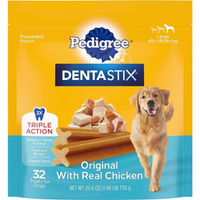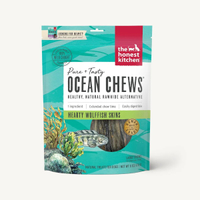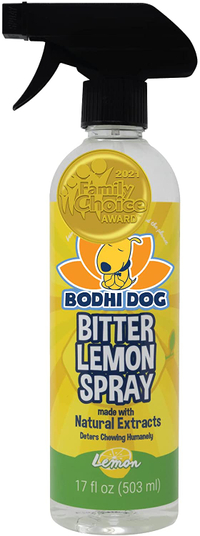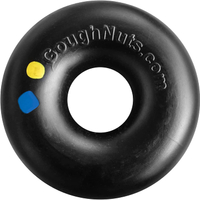How to stop a dog from chewing on carpet – and why do they do it?
Knowing how to stop your dog from chewing on carpet is going to put your mind (and bank balance) at ease
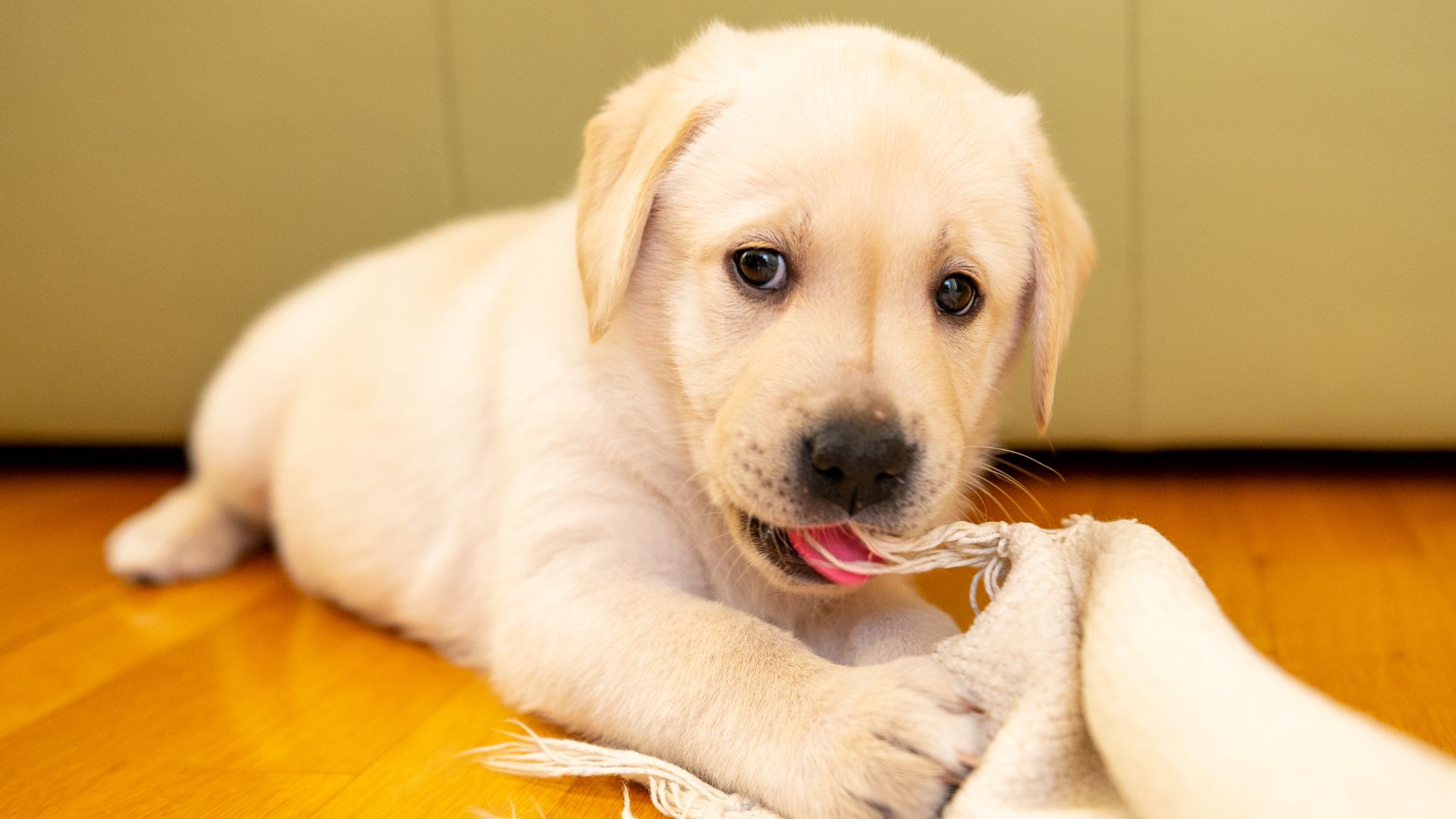
If you’re wondering how to stop a dog from chewing on carpet then it’s likely the problem has been going on for a while. It’s also likely that you have two primary concerns. First, you’re going to be worried about your dog and keen to discover if there is something wrong. Second, you’re going to be fretting over the state of your carpet (and maybe even wondering if the insurance will cover it!).
We can immediately put your mind at rest on the first point. Chewing the carpet is not indicative of a serious problem with your dog. Chewing is normal behavior and even the best dog chew toys are not going to entirely divert a pup's attention away from furniture, clothes, carpet, and other items that may fall within their line of sight.
That said, carpet chewing can be a sign of a young puppy teething. It can also be a sign of boredom or anxiety. The good news is that it is possible to teach a pup appropriate chewing behavior using a range of methods, helping to prevent your dog from becoming one of the four percent of dogs needing veterinary treatment due to a problem with chewing material as detailed in a study published in Applied Animal Behavior Science.
As explained by expert Dr. Joanna Woodnutt, the steps below will help stop the behaviour if your dog is chewing the carpet, causing much less frustration and stress for both of you.
Why your dog is chewing carpet
Never feel that your dog is chewing the carpet deliberately as a way to upset you. Your dog loves you and wants to please you. Instead, focus on the potential reasons that could be driving this behavior. Here are some of the most common.
1. Teething
Puppies explore their world through their mouths and for the few months that they’re teething, they’ll want to chew on anything and everything they can get their paws on to help relieve the pain and discomfort they’re experiencing. Unfortunately, unless you invest in several of the best teething toys for puppies, very few items will be safe from this chewing expedition, including your carpets!
"Young pups that are teething often need to chew – it relieves pain and helps their new teeth come through," says Woodnutt. "Dogs can crave a variety of textures to chew. While some like wood, others prefer rubber, and others prefer something soft. If you don’t give your dog a variety of things to chew and encourage him to chew on them, you might find your carpet becomes a substitute."
2. Anxiety
Does your dog spend long periods of the day home alone while you’re at work? Separation anxiety could be the cause of their carpet chewing as anxiety in dogs often causes them to engage in destructive behaviors to soothe themselves.
"Dogs that suffer from separation anxiety or noise phobias are most likely to chew the carpet, but any anxiety can cause carpet chewing," explains Woodnutt. "It’s very important you don’t punish your dog for chewing the carpet as this will make them more anxious and compound the problem."
If you notice other signs, such as urinating or defecating around the house, or your neighbors inform you that your dog has been barking or howling, anxiety could be the cause.
3. Attention seeking
If your dog has been chewing the carpet and you’ve been telling them off for doing so, you could be reinforcing the behavior without even realizing it. Believe it or not, while dogs prefer positive reinforcement and praise, if they’re after your attention, they’ll take whatever they can get, even if that’s you coming into the room to give them negative feedback.
4. Changes in their routine/environment
Stress can definitely cause your pup to engage in unwanted behaviors, including carpet chewing. If you notice that your canine companion started their chewing after you moved house, relocated their crate or food bowls, or it coincided with renovations, having guests, or welcoming a new addition into the family (of the pet or human variety), stress could be to blame.
5. Pica
Yes, believe it or not, pica is a condition that affects dogs too! This condition causes dogs to crave eating non-food items, including everything from carpets and drywall to golf balls and books (so if you’ve wondered why your cat eats plastic, there’s your answer).
Pica is incredibly dangerous as it can cause your dog to ingest things that are toxic to them, so getting them diagnosed is super important. Most of the time, Pica is caused by hormonal or nutritional imbalances, or certain diseases, such as diabetes, all of which can be treated with the help of your vet.
6. Lack of exercise
Your dog’s breed will dictate the amount of exercise they need, with breeds like the Australian Shepherd needing several hours each day and couch potatoes like the pug needing very little. If you have a high-energy breed and they’re not getting enough exercise, they may resort to carpet chewing as a way to burn off energy and keep themselves occupied.
7. Boredom
When a dog isn’t getting enough physical and mental stimulation, boredom can very quickly set in and as you probably already know, a bored dog is a dog that’s likely to get into mischief!
How to stop a dog from chewing on carpet
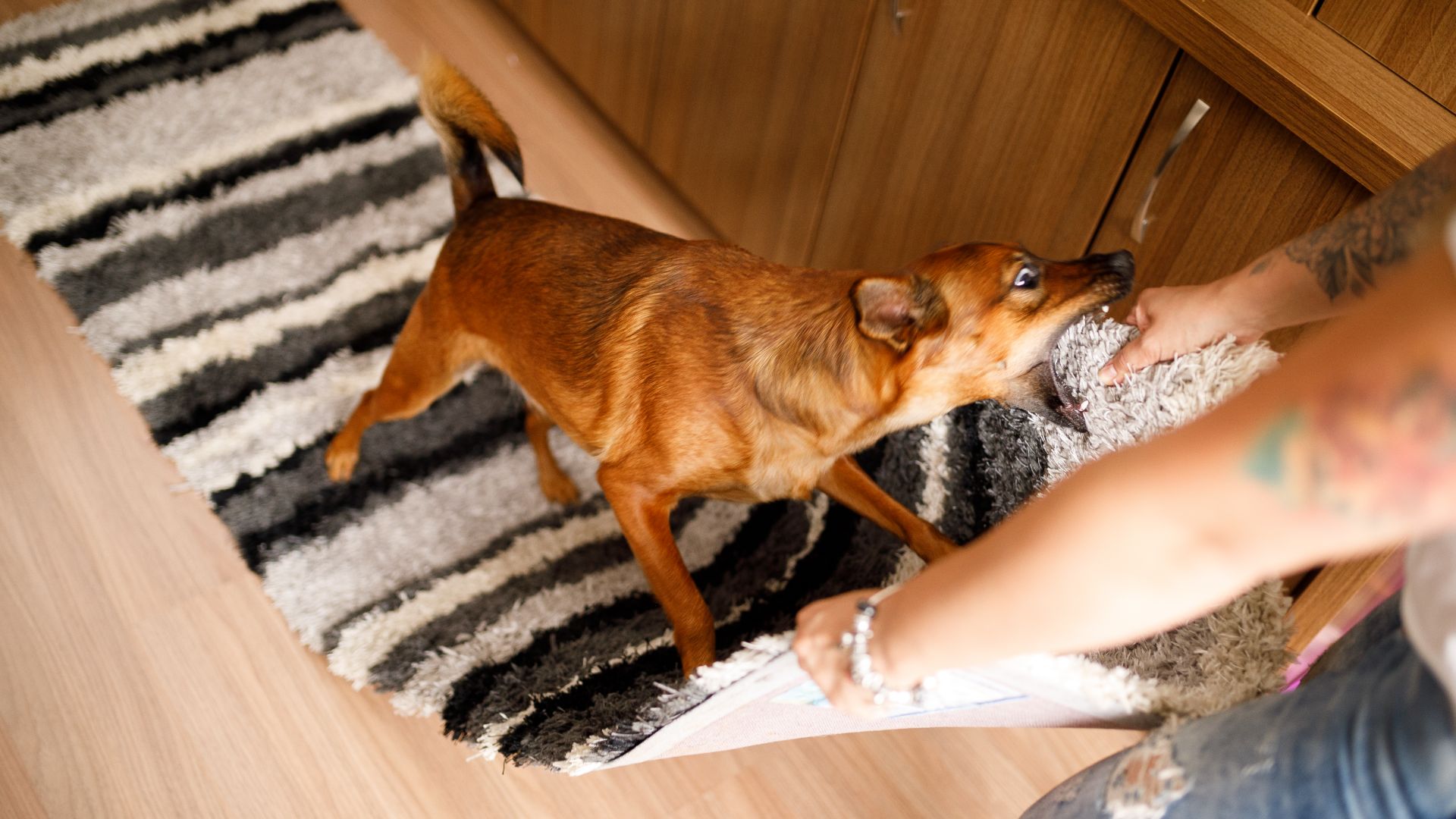
Once you’ve identified the root cause of your dog’s chewing behavior, there are several strategies you can use to put a stop to it. In many ways, they are similar to the methods used when addressing how to stop a dog from jumping up.
The first thing you can try is working with your dog directly using training methods to teach them that chewing the carpet is not ok. There are a couple of different approaches you can use here, including redirection and deterrent training methods, so let’s take a look at the steps for both of these.
1. Redirection
- Gather up a few of the best dog chew toys.
- Watch your pup closely and wait until you see him chewing the carpet.
- Pick up one of the chew toys and say ‘no’ in a firm voice.
- When your pup looks at you, redirect his attention by offering him the chew toy you’re holding in your hand.
- As he takes the toy, be sure to give him lots of verbal praise.
- Repeat.
Pedigree Dentastix Large Dog Dental Treats | Amazon
These treats offer triple action dental care by freshening breath, cleaning teeth and removing the build-up of plaque and tartar.
The Honest Kitchen Ocean Chews Fish Skins | Amazon
9in pressed, dried cod skin, suitable for medium to large breeds. They’re easily digestible and lasting a fair time.
2. Deterrent
- Pick up a bottle of pet deterrent spray - this won’t stain your carpet and your dog will dislike both the taste and the smell.
- Take a cotton ball and spray it with the deterrent. Give it to your dog so that he associates the nasty smell with the taste of what’s on the cotton ball.
- Lightly spray the area of carpet your dog likes to chew.
- Observe your dog as they head to their favorite spot. If, after smelling and tasting the spray, they decide to head to another patch of carpet, repeat the process until your pup learns to associate chewing on the carpet with having to smell and taste something they don’t like.
Bodhi Dog Bitter Lemon Spray | Amazon
Recommended by trainers and vets as a humane way to keep constant chewers at bay. 100% non-toxic and made with natural extracts to provide the bitter taste, this is one spray you can be happy to put around your home. It's also good for pets with allergies or other sensitivities to strong chemicals.
Grannick's Bitter Apple for Dogs | Amazon
This non-toxic and safe spray has had some reported good results in keeping furry friends away from precious furniture and fittings. It is made from water, isopropanol (20%), bitter principles, and extracts. Some users have found that the spray doesn't last that long, but regular application of the spray in places you don't want your pup to chew should help deter them.
Other ways to stop your dog from chewing the carpet
As well as training your dog, there are other methods you can use to halt carpet chewing.
1. Limit access
Another great way to stop your pup from chewing the carpet is to simply limit their access to carpeted rooms and ensure they don’t have any unsupervised time if they are in a room with carpet.
2. Physical and mental stimulation
Make sure your dog is getting enough physical stimulation with daily exercise that meets the minimum requirements for their breed – more is always better if you have a high-energy dog on your hands. Mental stimulation is important too and alongside standard dog toys, the best dog puzzle toys are ideal for giving your dog’s mind a good workout.
"Many of the causes of chewing can be improved by increasing the amount of interaction your dog has," confirms Woodnutt. "Try setting aside some quality time with your dog each day and playing some games or training together. This will improve boredom and increase mental stimulation, as well as reduce the need for attention-seeking behaviors."
3. Keep your canine occupied when you’re away from home
If you need to leave your pup at home for a few hours on their own, make sure you provide them with plenty of things to keep them busy. Kong toys (like this one on Amazon) are a fantastic choice as not only are these great for chewing, but they can be stuffed with ingredients like peanut butter and banana, which will keep your furry friend happy and entertained.
Goughnuts Durable Rubber Toy Dog Chew Toy Ring | Amazon
Made from high-grade rubber, this long-lasting chew toy comes with a lifetime replacement guarantee. Choose from a full range of size options is available for different breeds.
4. Crate training
Another good option for when you need to pop out for a few hours is to learn how to crate train a dog. Investing in one of the best dog crates can give your pup a safe and secure place to stay when you’re not able to be with them and will prevent them from chewing on your carpet and other belongings. To help them feel comfortable in their crate, pop their bed and a nice cozy blanket inside and be sure to leave them with a few toys to play with.
5. Visit your vet
"If your dog is suffering from anxiety or a phobia you should consider professional help - your vet will be able to recommend a behaviorist who uses positive techniques," advises Woodnutt. A trip to the vet will also help when it comes to ruling out any underlying physical or mental health issues that could be contributing to your pup's carpet-chewing behavior.
Caring for a puppy is hard work. If you’ve got the puppy blues, this feature has everything you need to know.

Dr Joanna Woodnutt qualified as a veterinarian from the University of Nottingham where she then went on to practice companion animal medicine in the Midlands. She really took to the consulting side of things and helping clients with medical problems such as dermatology, behaviour and nutrition - anything that involved helping clients understand their pets better.
PetsRadar Newsletter
Get the best advice, tips and top tech for your beloved Pets

Kathryn is a freelance writer who has been a member of the PetsRadar family since it launched in 2020. Highly experienced in her field, she's driven by a desire to provide pet parents with accurate, timely, and informative content that enables them to provide their fur friends with everything they need to thrive. Kathryn works closely with vets and trainers to ensure all articles offer the most up-to-date information across a range of pet-related fields, from insights into health and behavior issues to tips on products and training. When she’s not busy crafting the perfect sentence for her features, buying guides and news pieces, she can be found hanging out with her family (which includes one super sassy cat), drinking copious amounts of Jasmine tea and reading all the books.
- Dr Joanna Woodnutt MRCVS
- Bethany StoneFreelance Writer
